Bolting is a natural process that occurs in many plants, including Cilantro. This can happen when certain conditions trigger the plant to divert its energy toward reproduction rather than leaf production. How Do You Know When Cilantro is Bolting? One of the Cilantro bolting signs is elongated stems shooting up from the center of the plant.
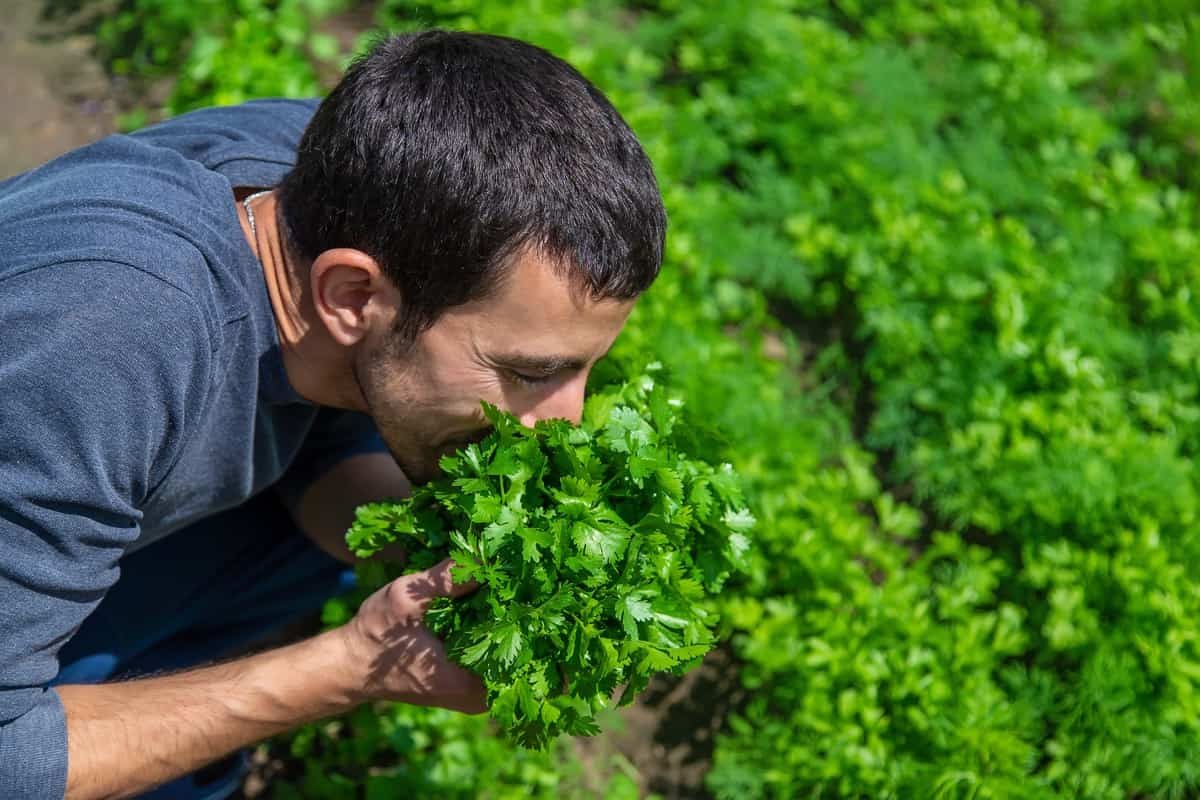
These stems will eventually produce flowers, indicating that the Cilantro is entering its reproductive phase. You may also observe a change in leaf shape and size. What Happens When Cilantro Bolts? When Cilantro bolts, it undergoes a significant transformation. The plant shifts its focus from producing leaves to developing flowers and seeds.
How to Prevent Cilantro Bolting
High Temperatures
High temperatures can be one of the main causes of Cilantro bolting. When the weather gets too hot, it signals to the plant that it’s time to produce seeds and complete its life cycle. Cilantro prefers cooler temperatures, so it tends to bolt when exposed to prolonged heat. During periods of high temperatures, Cilantro plants may also experience water stress. Excessive heat causes the soil to dry quickly, leading to dehydration in the plant.
This further trigger bolting as a survival mechanism. Cilantro prefers cooler temperatures, typically between 10°C-24°C. The Cilantro bolting temperature is above this range. To prevent Cilantro from bolting due to high temperatures, there are a few steps you can take. Consider planting your Cilantro in an area that receives partial shade during the warm day or provide some form of shade using a garden umbrella or cloth cover.
Additionally, regular watering is crucial in hot weather conditions. Ensure that your Cilantro plants receive enough moisture without being overwatered. If you live in an area with consistently high temperatures during summer months, consider growing Cilantro indoors or starting seeds early in spring when temperatures are milder.
In case you missed it: How to Grow Coriander/Cilantro from Seed to Harvest: Check How this Guide Helps to Start a Coriander Garden for Beginners
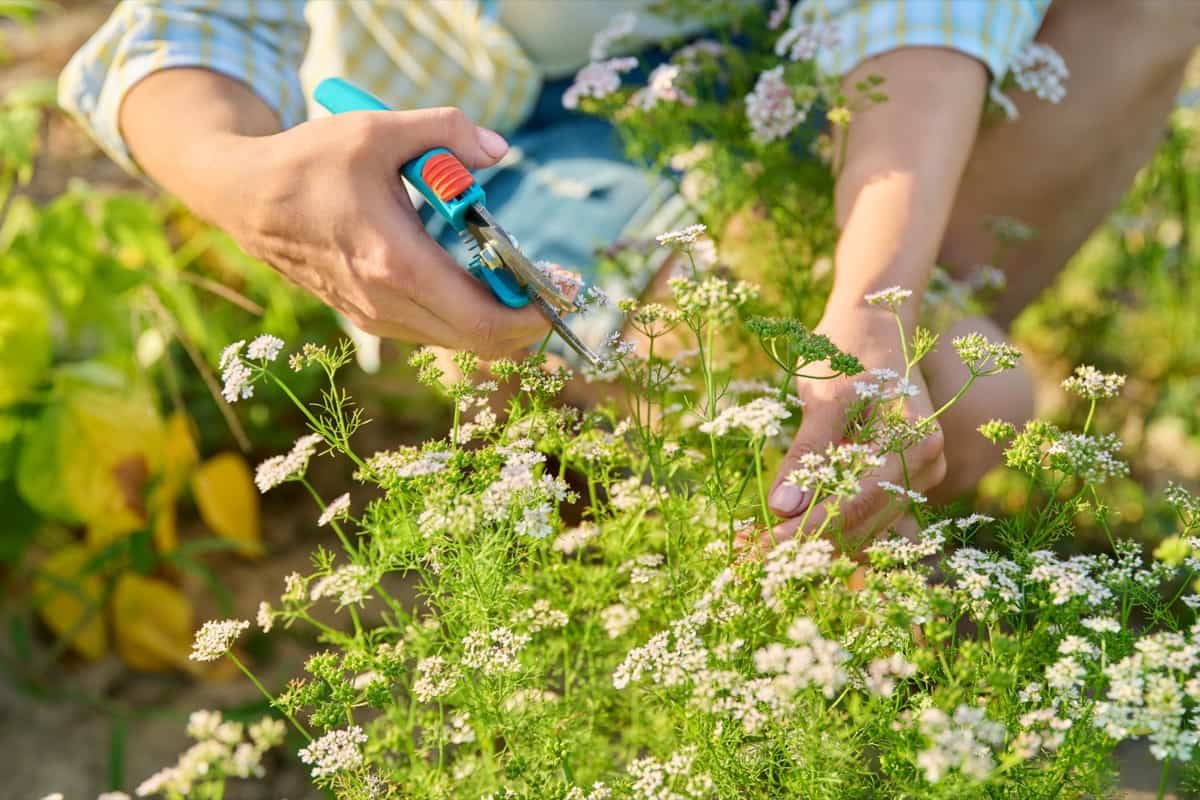
Cilantro Plants Age
Like any living organism, Cilantro plants go through a natural aging process. As they mature, their growth patterns change, and they become more prone to bolting. Bolting is when the plant’s energy shifts from leaf production to flower formation in an attempt to reproduce. Will Cilantro Grow Back After Bolting? It’s important to understand that Cilantro is an annual herb that completes its life cycle within one year.
The plant will naturally die once it bolts and produces flowers and seeds. However, this doesn’t mean you can’t continue enjoying fresh Cilantro from your garden. When Cilantro plants age, their stems elongate, and the leaves become smaller and less flavorful. This can be frustrating for gardeners who want fresh, vibrant Cilantro leaves for culinary use. To prevent Cilantro plants from bolting due to age, it’s important to harvest them regularly.
By continuously harvesting the plant’s outer leaves before they reach maturity, you can delay the onset of bolting and prolong your supply of fresh Cilantro. Another way to manage Cilantro plants as they age is by succession planting. Instead of growing all your Cilantro immediately, stagger your plantings to have a continuous supply throughout the growing season.
Regularly monitoring soil moisture levels and providing adequate water can also help slow down the aging process of Cilantro plants. Dry conditions can accelerate bolting, so keeping your plants well-hydrated is essential. In addition to proper watering techniques, ensuring that your Cilantro plants receive enough sunlight is crucial in preventing premature aging and subsequent bolting. Cilantro thrives in full sun or partial shade environments with at least 4-6 hours of direct sunlight daily.
Environmental Stress
Environmental stress can significantly impact the health and growth of Cilantro plants. This type of stress occurs when the plant is exposed to unfavorable conditions. Extreme temperature fluctuations, drought, or excessive moisture can cause it. One common source of environmental stress for Cilantro is inconsistent watering.
If the soil is too dry or waterlogged, it can unnecessarily strain the plant’s roots and affect its overall well-being. Another form of environmental stress is poor soil quality. Cilantro requires well-draining soil with good fertility levels to thrive. If the soil lacks essential nutrients or has a high clay content that hampers drainage, it can lead to weak and stressed plants. Excessive exposure to wind or strong drafts can also cause environmental stress for Cilantro.
The constant air movement around the plant can result in transpiration rates that exceed its ability to take up water from the soil, leading to dehydration and stunted growth. Additionally, overcrowding in planting beds or containers can subject Cilantro plants to competition for resources like sunlight and nutrients, contributing to environmental stress.
In case you missed it: 18 Common Cilantro/Coriander Plant Problems: How to Fix Them, Solutions, and Treatment
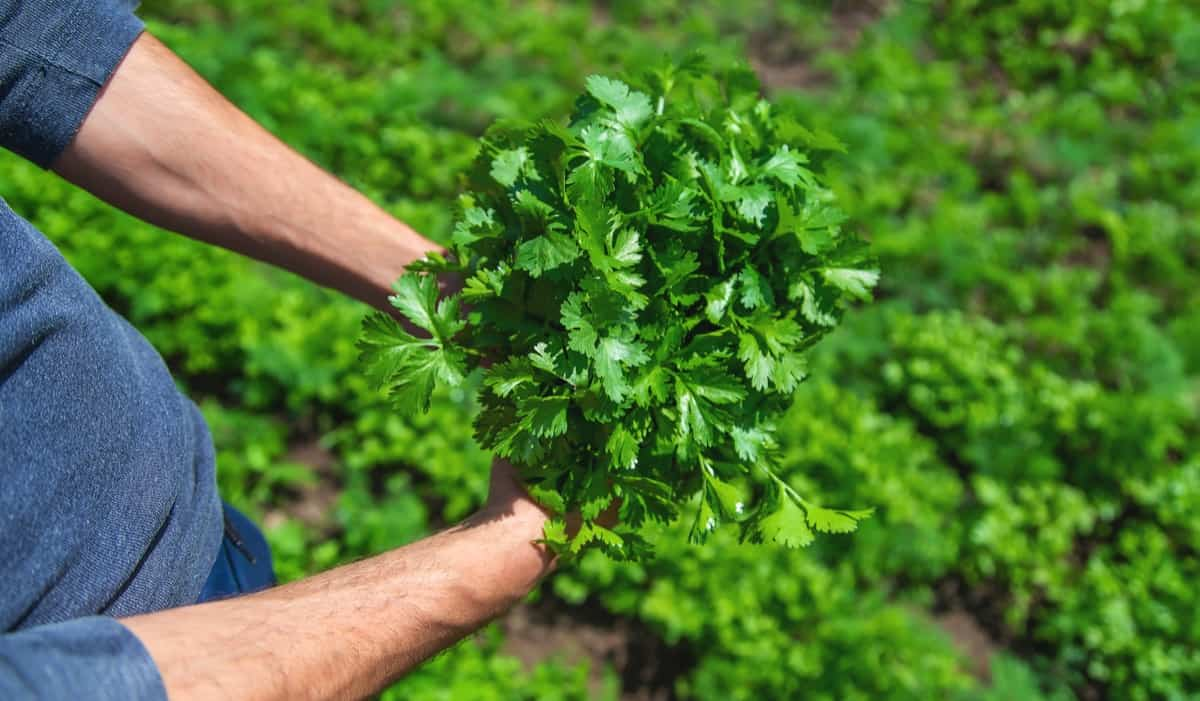
To prevent these issues related to environmental stress, provide your Cilantro plants with consistent watering without overwatering them. Ensure you are using well-draining soil rich in organic matter for optimal growth conditions. Protect your plants from strong winds by providing adequate shelter or creating windbreaks if necessary. And ensure proper spacing between each plant so they have enough room to grow without competing with one another.
Sudden Changes in Light Exposure
Like many plants, Cilantro relies on consistent sunlight to grow and thrive. However, sudden changes in light exposure can throw off its delicate balance. Cilantro can become stressed and confused When it experiences sudden changes in light exposure. This stress often triggers bolting – the process where the plant rapidly produces flowers and seeds. To prevent this from happening, you need to provide your Cilantro with stable lighting conditions.
Avoid placing it in areas with drastic fluctuations in natural light or artificial lighting patterns. Consider using lights that mimic natural sunlight if you’re growing indoors. Remember that consistency is important when it comes to lighting for Cilantro. Keeping its environment steady and providing a regular amount of light daily greatly reduce the chances of your beloved herb bolting prematurely.
Excessive Nitrogen Fertilization
When it comes to growing Cilantro, finding the right balance is key. And that includes fertilizing your plants. While nitrogen is important for healthy growth, too much can lead to bolting. Excessive nitrogen fertilizer can cause Cilantro plants to grow rapidly and focus on producing foliage rather than developing a strong root system. This imbalance in growth can trigger the plant’s natural response to bolt and produce flowers prematurely. To prevent this from happening, it’s important to use nitrogen-based fertilizers sparingly and follow the recommended application rates.
Inadequate Pruning
Proper pruning maintains the health and productivity of Cilantro plants. Inadequate pruning can increase the risk of bolting and reduce overall plant vigor. When Cilantro plants are not pruned regularly, they can become overcrowded and compete for sunlight and nutrients. This can result in weak growth and a higher chance of bolting. Additionally, neglecting to prune wilted or yellowing leaves can hinder the plant’s ability to photosynthesize effectively.
Removing these unproductive parts encourages new growth and prevents energy from being wasted on dying foliage. It is important to remember that Cilantro should be pruned selectively rather than indiscriminately. Removing too many leaves at once could shock the plant or trigger early flowering. Remove any dead or diseased leaves using clean gardening shears to prune your Cilantro plants properly. Next, thin out crowded areas by cutting back larger stems near ground level.
In case you missed it: Growing Coriander From Seeds – (Cilantro) At Home

Pests and Diseases
One common pest that affects Cilantro is aphids. These tiny insects feed plant sap, causing stunted growth and deformation of leaves. They also excrete honeydew, which attracts other pests like ants and can lead to fungal infections. Another pesky culprit is the fungus called powdery mildew. This disease appears as a white or grayish powder on Cilantro plants’ leaf stems and flowers. It not only hinders photosynthesis but also weakens the plant’s immune system.
Root rot is yet another problem that can contribute to bolting in Cilantro. This fungal infection occurs when there is excessive moisture around the roots, leading to decay and eventual death of the plant. To prevent these issues from occurring, proper maintenance is crucial. Regularly checking your plants for signs of pests or diseases allows you to take immediate action. Using organic insecticides or fungicides can help control infestations without harming beneficial insects.
Seasonal Changes
Cilantro is a delicate herb that is sensitive to changes in seasons. As the weather shifts from one season to another, Cilantro plants can be affected in various ways. For example, rising temperatures can cause Cilantro to bolt prematurely from spring to summer. In hotter climates, prolonged exposure to high temperatures can trigger bolting earlier.
Cilantro prefers cooler temperatures and tends to thrive in mild weather conditions. On the other hand, during colder months or when winter approaches, Cilantro may struggle due to frost or freezing temperatures. This can stunt its growth or even kill off the plant entirely. Cilantro growers must notice these seasonal changes and adjust their cultivation methods accordingly.
This might involve providing shade or protection during hot summers or planting Cilantro indoors during harsh winters. By being mindful of seasonal shifts and adapting your gardening practices accordingly, you can help prevent premature bolting and ensure a more successful harvest of fresh Cilantro leaves throughout the year.
In case you missed it: 8 Easy Seeds to Start for Beginners: For Flowers, Fruits, Herbs, and Vegetables
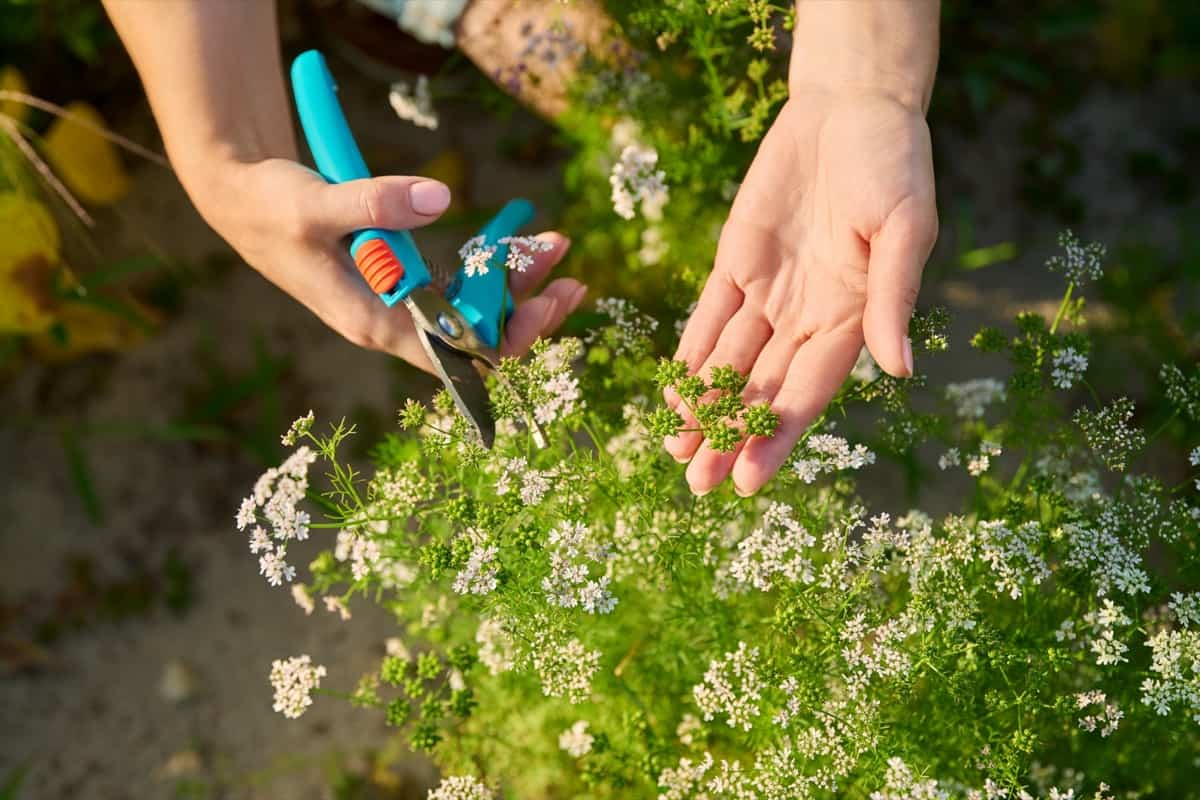
How Do I Keep My Cilantro From Bolting?
Cilantro herb adds a delicious flavor to many dishes. When preventing Cilantro from bolting, consider planting Cilantro in an area with partial shade. This can help protect the plants from direct sunlight and prevent them from becoming stressed due to high temperatures. Another important factor in preventing Cilantro from bolting is regular pruning. Regularly harvesting leaves can encourage the plant to focus its energy on producing foliage rather than flowers. Additionally, avoid over-fertilizing your Cilantro with nitrogen-rich fertilizers.
While nitrogen promotes leafy growth, excessive amounts can trigger early flowering and bolted plants. What to Do When Cilantro Flowers? When Cilantro plants start to flower, it can be a bit disappointing. Letting nature take its course and allowing the flowers to bloom is one option. This can attract beneficial insects like bees and butterflies to your garden. Plus, some people enjoy using delicate blooms as a garnish or in floral arrangements.
What to Do With Bolted Cilantro? When your Cilantro bolts, it can be disappointing, especially if you look forward to a bountiful harvest of fresh leaves. Even though the flavor of bolted Cilantro can be more intense and bitter, there are still ways you can make use of it in your kitchen. Can you eat bolted Cilantro?
This is a common question that many Cilantro enthusiasts may ask when they see their plants starting to go to seed. You can still eat bolted Cilantro, but some considerations must be remembered. Bolted Cilantro leaves tend to become tougher and more bitter than fresh, young leaves. However, the seeds produced by bolted Cilantro plants are known as coriander seeds and are commonly used as a culinary spice.
In case you missed it: 10 Common Herb Gardening Mistakes and How Every Beginner Should Avoid Them
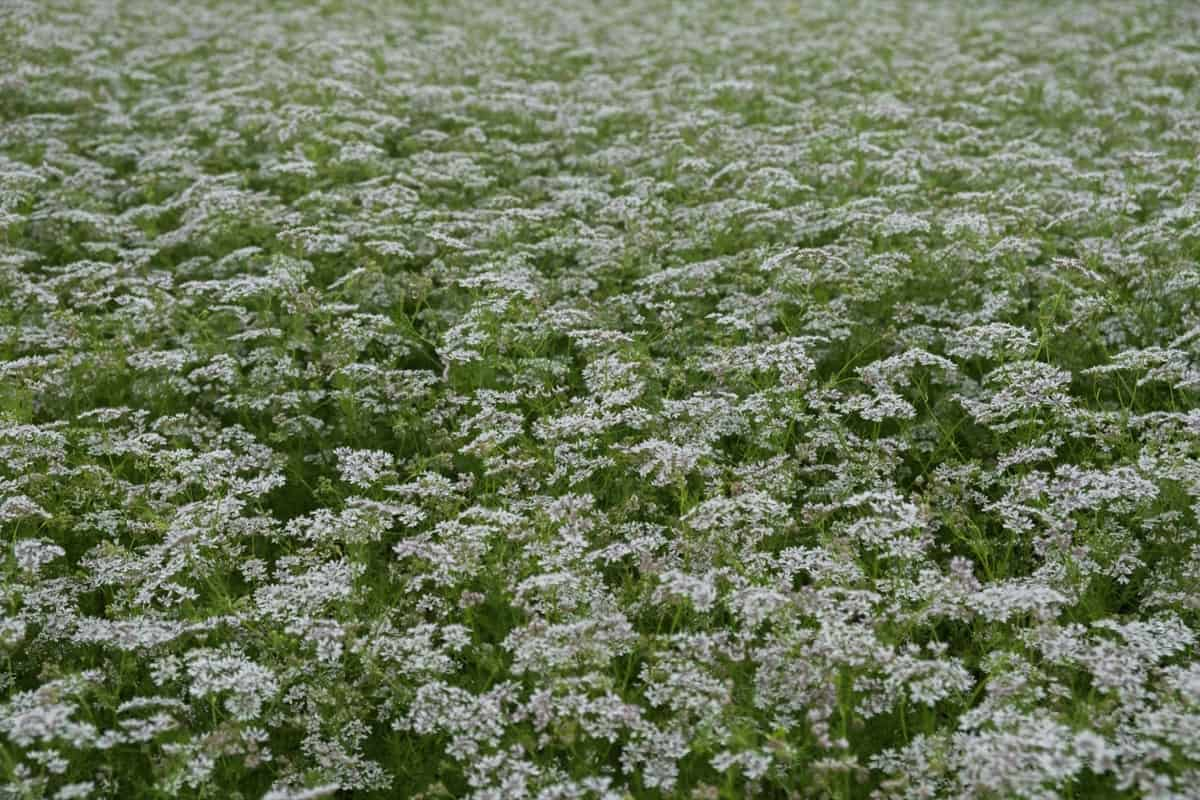
Conclusion
Cilantro bolting can be a frustrating issue for herb gardeners. However, with a proper understanding of the causes and preventive measures, you can successfully grow healthy Cilantro plants without them going to seed too soon. Remember to provide your Cilantro plants with the right growing conditions, such as adequate sunlight, well-drained soil, and regular watering. Additionally, choose slow-bolting varieties that are less prone to premature flowering.
By closely monitoring your Cilantro plants and implementing these preventative measures early on, you can enjoy a bountiful harvest of fresh Cilantro leaves throughout the growing season. So go ahead and put this knowledge into practice in your herb garden. Enjoy the vibrant flavors of this versatile herb while ensuring that it stays leafy and delicious for as long as possible.
- How to Grow Hibiscus from Flower
- Plantation Ideas for Home Decoration: A Beginners Guide
- Flower Garden Designs and Layouts for Beginners
- Planting and Spacing Techniques in Papaya: A Beginner’s Guide
- Growing Gold: Essential Techniques for Planting Pineapples
- How to Make Kalanchoe Plant Bushy: Home Remedies and Solutions
- 11 Reasons Why Your Gardenia is Not Blooming: Home Remedies and Solutions
- Eco Elegance: The Guide to Designing a Drought-Tolerant Landscape
- Gardening on a Slope: Strategies for Hillside Landscaping
- Nourish and Flourish: Top Organic Mulches for Thriving House Plants
- Everything You Want to Know about Indian Mogra Flower: Discover Uses and Growing
- Green Thumb Success: Expert Tips for Cultivating Greenhouse Pumpkins All Year Round
- Maximize Growth & Flavor: The Ultimate Guide to Companion Planting in Herb Gardens
- How to Control Rhododendron Problems Naturally: Home Remedies and Organic Ways to Fix Them
- Natural Magic: The Remarkable Benefits of Cinnamon for Plants
- Best Steps to Revive Dying Tulip with Natural and Organic Treatment
- 10 Reasons Why Your Angel Trumpet is Not Blooming: Remedies and Treatment
- How to Fix Periwinkle Leaf and Flower-Related Problems: Natural Remedies and Solutions
- How to Fix Zinnias Leaf and Flower Problems: Discover Natural and Home Remedies
- Organic Steps to Induce Lemon Tree Flowers: A Comprehensive Guide
- Bloom Booster: Crafting the Perfect Homemade Bougainvillea Fertilizer
- Optimizing Growth: A Guide to Applying NPK Fertilizer for Potted Plants
- 10 Best Homemade Fertilizers for Rubber Plant: DIY Recipes and Application Method
- How to Boost Female Pumpkin Flowers: Effective Steps for More Flowers and High Yields
- Transform Your Indoor Garden: Top Benefits of Pink Salt for Houseplants
- 10 Best Homemade Fertilizers for Peacock Plants (Calathea): Easy DIY Guide
- Unlock Blooms: 9 Reasons Why Your Potted Chrysanthemum is Not Blooming
- 8 Reasons Why Your Potted Hibiscus is Not Blooming: Fix it with Simple Solutions
- Unlock Blooms: 9 Key Reasons Your Potted Frangipani Won’t Flower
- 10 Reasons Why Is My Ice Plant Not Blooming: Remedies and Treatment
- 10 Reasons Why My Potted Hydrangea Not Blooming: Treatment and Remedies
- 10 Reasons Why is My Wisteria Not Blooming: Remedies and Treatment
- 10 Reasons Why is My Goldfish Plant Not Blooming: Remedies and Treatment
- Maximize Your Space: Ultimate Guide to Balcony Gardening with Grow Bags
- 10 Reasons Why Your Iris is Not Blooming: Remedies and Treatment
- 10 Reasons Why Your Anthurium Plant is Not Blooming: Treatment and Remedies